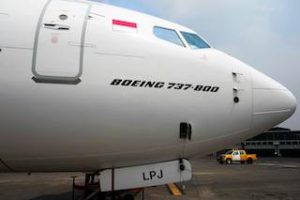Understanding The Evolution Of Commercial Jet
 Commercial jets are at the heart of modern air travel. These aircraft play a crucial role in connecting cities and countries across the globe. With advancements in aviation technology, commercial jets have become faster, more efficient, and more environmentally friendly. In this article, we will explore the key aspects of commercial jets, from their design and capabilities to their impact on the global economy.
Commercial jets are at the heart of modern air travel. These aircraft play a crucial role in connecting cities and countries across the globe. With advancements in aviation technology, commercial jets have become faster, more efficient, and more environmentally friendly. In this article, we will explore the key aspects of commercial jets, from their design and capabilities to their impact on the global economy.
Evolution of commercial jets
The development of commercial jets has come a long way since the early days of aviation. The first jet airliner, the de Havilland Comet, entered service in 1952, marking a significant milestone in air travel. However, it was the Boeing 707 and the Douglas DC-8 that truly revolutionized the commercial aviation industry. These jets introduced the concept of long-distance, high-speed air travel, making it accessible to a wider audience.
Since then, jet technology has evolved rapidly. Newer models like the Boeing 777, Airbus A350, and Boeing 787 have incorporated state-of-the-art materials, advanced engines, and cutting-edge avionics systems. These innovations have led to jets that are faster, quieter, and more fuel-efficient than ever before.
Design and engineering of commercial jets
The design of a commercial jet involves complex engineering and meticulous planning. Modern jets are typically made from a combination of lightweight materials, including aluminum and carbon fiber, which helps reduce weight and increase fuel efficiency. The aerodynamic shape of the aircraft is carefully crafted to minimise drag, allowing the jet to travel faster and more efficiently.
The most significant design consideration is the size of the jet. Commercial jets vary in size, with smaller regional jets carrying up to 100 passengers, while larger long-haul jets can seat over 400 passengers. The size of the aircraft affects not only its capacity but also its range, speed, and fuel consumption.
Engines are another critical component of commercial jets. Jet engines generate thrust by expelling high-speed air, which propels the aircraft forward. Modern engines are designed to be more fuel-efficient, quieter, and environmentally friendly. Advances in materials and design have helped increase the lifespan of jet engines, reducing maintenance costs for airlines.
Role of commercial jets in the global economy
Commercial jets are vital to the global economy. They facilitate international trade, tourism, and business by providing fast and reliable transportation. Air cargo services rely heavily on commercial jets to transport goods quickly over long distances. Without these jets, industries such as electronics, pharmaceuticals, and perishable goods would face significant challenges in getting their products to market.
In addition, commercial jets help promote tourism, which is a major contributor to the economy in many countries. International flights allow travelers to explore new destinations, boosting the hospitality and tourism sectors. Business travel is also essential for global companies that rely on face-to-face meetings and events to drive their operations.
Fuel efficiency and environmental impact
Fuel efficiency is a major focus for the aviation industry. With rising fuel costs and growing concerns about climate change, airlines are constantly seeking ways to reduce fuel consumption and lower emissions. Modern commercial jets are designed with fuel efficiency in mind, using advanced materials and aerodynamics to minimize fuel usage.
Jet manufacturers are also exploring alternative fuels, such as biofuels and hydrogen, to reduce the carbon footprint of commercial aviation. While these technologies are still in the early stages, they offer promising solutions for making air travel more sustainable in the future.
Despite these efforts, aviation remains a significant contributor to global greenhouse gas emissions. The industry accounts for around 2-3% of global CO2 emissions, which has led to calls for greater investment in cleaner technologies and more sustainable practices. Airlines are working towards reducing their environmental impact by adopting more fuel-efficient aircraft, optimizing flight paths, and improving operational procedures.
Passenger experience in modern commercial jets
Passenger experience has always been a key consideration in the design of commercial jets. Airlines aim to provide a comfortable and enjoyable flight experience for their passengers, whether on short regional flights or long-haul international journeys. The interior of commercial jets has evolved significantly over the years, with improved seating, in-flight entertainment, and amenities.
Seating arrangements vary depending on the size and class of the aircraft. Larger jets often offer multiple cabin classes, such as economy, business, and first class. Each class is designed to cater to different levels of comfort and service, with business and first-class passengers enjoying more spacious seats, gourmet meals, and exclusive amenities.
In-flight entertainment systems have become a standard feature on many commercial jets. Passengers can enjoy movies, music, and games during their flight. Many newer jets also offer Wi-Fi connectivity, allowing passengers to stay connected to the internet while in the air.
Safety standards and regulations
Safety is a top priority for the aviation industry. Commercial jets must adhere to strict safety standards set by regulatory authorities such as the Federal Aviation administration and the European Union Aviation Safety agency. These organizations oversee the certification of new aircraft, ensuring they meet stringent safety requirements before they can be used for commercial flights.
In addition to aircraft design and maintenance, pilots and crew members undergo extensive training to ensure the safety of passengers. Commercial jets are equipped with advanced avionics systems that help pilots navigate, communicate, and monitor the health of the aircraft during flight. Regular inspections and maintenance are conducted to ensure that all systems are functioning properly.
Airlines also implement safety protocols for emergency situations, including evacuation procedures, life vests, and oxygen masks. While air travel is one of the safest modes of transportation, airlines and regulatory agencies continue to work towards further improving safety standards.
Commercial jets and their role in the future of air travel
The future of commercial jets is closely linked to advancements in technology and sustainability. The aviation industry is exploring new ways to reduce its environmental impact, including the development of electric and hybrid-electric aircraft. These innovations could revolutionize air travel by providing quieter, more sustainable options for short-haul flights.
In addition to cleaner technology, the aviation industry is also looking at ways to improve the efficiency of existing jet fleets. Innovations in flight management systems, air traffic control, and fuel optimization will help reduce delays, cut fuel consumption, and improve the overall efficiency of commercial aviation.
Passenger experience is also expected to continue evolving. Airlines are focusing on enhancing comfort, connectivity, and convenience. Future commercial jets may feature more spacious cabins, improved in-flight services, and even biometric systems to streamline the check-in and boarding processes.
Future of supersonic commercial jets
In recent years, there has been renewed interest in the development of supersonic commercial jets. These aircraft would be capable of flying faster than the speed of sound, significantly reducing flight times. For example, a supersonic jet could fly from New York to London in just three and a half hours, compared to the typical seven hours on a subsonic jet.
While supersonic jets were previously limited by noise regulations and fuel inefficiency, advancements in technology are making these aircraft more feasible. Newer designs focus on reducing the sonic boom that occurs when the jet breaks the sound barrier, making supersonic travel more acceptable in populated areas.
Several companies are currently working on the development of supersonic commercial jets. If successful, these aircraft could reshape the aviation industry by offering passengers faster travel times and opening up new possibilities for international business and tourism.
Commercial jets and air traffic management
With the increasing number of commercial jets in operation, air traffic management has become an increasingly complex task. Efficient management of airspace is crucial to ensure the safety and punctuality of flights. Air traffic control systems are responsible for directing aircraft and managing the flow of air traffic to prevent collisions and delays.
Modern air traffic management relies heavily on technology, including radar, satellite tracking, and advanced communication systems. These tools allow air traffic controllers to monitor aircraft in real-time and guide them safely to their destinations. In addition to improving safety, air traffic management systems are being optimized to reduce fuel consumption and improve flight efficiency.
As air traffic continues to grow, there is a push towards more advanced systems, such as unmanned aerial vehicles (UAVs) and automated flight control systems. These technologies could help alleviate congestion in busy airspaces and improve the overall efficiency of air travel.
Global fleet of commercial jets
The global fleet of commercial jets is vast and diverse. Airlines operate thousands of jets worldwide, ranging from small regional aircraft to massive wide-body jets. These jets serve various purposes, including passenger transport, cargo delivery, and special missions such as humanitarian aid and military operations.
The largest fleets are often found in countries with major international airports, such as the United States, China, and the United Arab Emirates. Airlines in these regions operate a mix of aircraft from leading manufacturers such as Boeing and Airbus. The competition between these two giants has driven innovation and improved the performance of commercial jets.
As the demand for air travel continues to grow, the global fleet of commercial jets is expected to expand. Manufacturers are ramping up production to meet this demand, with hundreds of new aircraft being delivered each year. This growth will play a key role in shaping the future of global air travel.
Future of commercial jets
The commercial jet industry is rapidly evolving, driven by innovation, sustainability goals, and changing passenger demands. Emerging technologies such as electric and hybrid-electric engines, advanced materials, and AI-powered flight management systems will revolutionize the way commercial jets operate.
Airlines will continue to focus on reducing carbon emissions and improving fuel efficiency. The development of alternative fuels, including biofuels and hydrogen, will become more prevalent. Meanwhile, the passenger experience will be shaped by cutting-edge technologies like personalized in-flight entertainment and enhanced connectivity.
As the aviation industry faces growing pressure to adapt to a changing world, the future of commercial jets looks promising. Technological advancements, environmental considerations, and evolving passenger expectations will continue to shape the way we travel in the skies.










